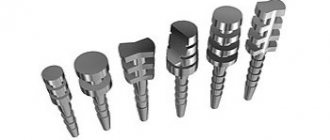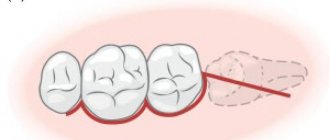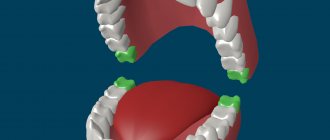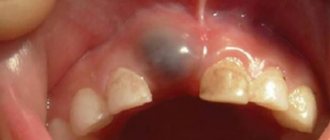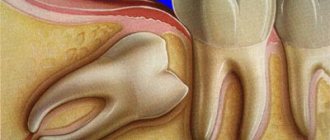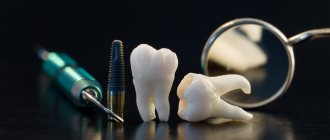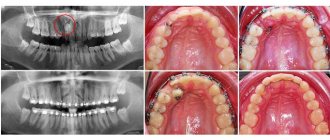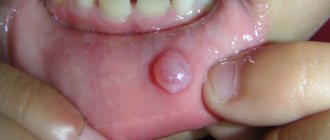Dental experts agree that the process of root canal treatment must be completed with the installation of a reinforcing inlay. Anchor pins are manufactured for this purpose. Ideally, its service life should correspond to the life expectancy of a person. But if certain rules are not followed, a situation may arise when the pin needs to be removed. It should be noted that this procedure should be taken very seriously, since improper removal of the anchor pin can have unpleasant consequences, including tooth loss.
Removing an anchor pin in dentistry
Removing an anchor pin in dentistry usually occurs as follows. The crown is removed from the diseased tooth. As a result, the pin becomes clearly visible. Using certain ultrasonic attachments, a specialist will remove it in a few minutes. In this case, you will not feel any particular discomfort. At the medical level, this operation will be performed at the highest level, with high quality and almost painlessly. The main thing is not to delay going to the dentist to save your tooth. You can make an appointment for a consultation simply by calling the phone number listed on the website.
Removing the metal stump from the canal. Clinical case.
What to do if a tooth hurts under the crown? What if there has been a cast metal pin in this tooth for a long time? Until recently, such teeth were the prey of surgeons, with only one option - removal. But with the development of canal treatment technologies, and especially with the introduction of operating microscopes into the practice of dentists, the task of saving a patient’s tooth has become not so fantastic. And today I want to show one such example from my practice.
Stump pin inlays are one of the ways to restore a tooth when there is little left of it. And not so long ago, this was actually the last chance for the badly damaged “stumps” to serve for some more time. True, such a design was a kind of gravestone - if something happened, getting the cast pin out of the root canal was an almost impossible task. Most often this ended in complete destruction of the root and the need to remove it. But, thank God, times are changing.
With the advent of heavy (in every sense of the word) artillery in the dental arsenal in the form of an operating microscope, the task of removing a stump inlay from a tooth has become much more predictable.
I encountered such a clinical case quite recently. After removing the old metal-ceramic crowns, we got this picture. To maintain the possibility of reliable restoration of these teeth, careful handling of the remaining hard tissues of the teeth (shown by the black arrow) is key.
So, the teeth were restored with metal core inlays. Today the patient wants to install metal-free ceramic crowns, which means we don’t need metal underneath at all. In addition, the root canals in these teeth were not completely filled adequately.
This means that before making new beautiful natural restorations, it was necessary to prepare a reliable and durable “foundation” for them. Breaking is not building. That's what they usually say. But, oddly enough, in this situation one can say exactly the opposite. Breaking is a much more complex and responsible matter in this case. The future fate of the tooth depends entirely on the degree of care and precision of its execution.
How the old core inlay was ultimately “dismantled”, and how the root canal was then prepared for the manufacture of a new core inlay made of zirconium dioxide, can be seen in the video (to better see the details, it is advisable to open it on full screen with the highest quality possible allow the speed of your Internet)). About 1.5 hours of real work fit into 5 screen minutes.
{youtube}wN4pSP_371I{/youtube}
So, today most of the teeth that dentists did not take on before, or took on without much enthusiasm and guarantees, can today be preserved. Removing anchor pins, fiberglass pins, and cast pin inlays from root canals today is no longer a medical feat, but a routine task. Especially for those who use a high magnification operating microscope in their practice.
Anchor pin removal price
You can find out the price for removing the anchor pin in a medical clinic in the “Treatment of root canals” section or from our consultants. The cost ranges from 650 rubles. Our clinic specialists are always at your service during business hours. We are happy to help you maintain a charming smile. Our doctors regularly improve their skills and master all modern technologies. Here you will find a full range of dental services at affordable prices. And remember that timely contact with a specialist will help you avoid more complex problems in the future. We will provide you with quality medical care. You will see from personal experience that the dentist is not as scary as they make him out to be.
Removing fiberglass posts from teeth
One of the major challenges in re-canal treatment is the removal of foreign bodies from the root canal space. These may be fragments of instruments, as well as various kinds of pins fixed into the tooth during previous treatment. Retrieving all of these artifacts can be a major challenge for the dentist. Today I will show you exactly how to remove fiberglass pins , perhaps the most unpleasant of the possible obstacles to cleaning the canals.
In our example today, during the previous treatment, 3 (!!!) pins were immured in the tooth. A separate question is why there is so much, but it is unlikely that a reasonable explanation can be found for this.
So, before starting to re-treat the tooth, we have this initial x-ray.
What do we see on it? It can be seen that a large granuloma has grown on one of the roots - chronic inflammation in the bone tissue surrounding the tooth. Visible on x-ray as a dark spot around the root apex.
The task of retreatment is to re-clean the root canal system of this tooth in order to remove the infection and food for it. Then the body simply will have nothing to fight with and the granuloma will go away on its own out of despair. In this case, the path to the canals is tightly closed with fiberglass pins cemented inside. SWS are not radiopaque and are not visible on photographs. Those. their presence can be suspected by the emptiness in the initial part of the channel.
But when the tooth is opened, everything becomes extremely clear.
The main difficulty in removing fiberglass pins from tooth canals is that both the pin itself and the cement on which it is glued inside the tooth have high strength. Thus, the only way to extract it is by “slotting” or drilling. If the doctor tries to do this without magnification, there is a high risk of tooth perforation with the prospect of removal. The deeper the pin is fixed in the canal, the higher the risk. Therefore, any dentist involved in canal treatment becomes despondent when the prospect of such work opens up before him.
However, the use of a microscope makes it possible to make the procedure for removing fiberglass pins from a tooth highly predictable and safe.
How this happens in real conditions is shown in the short video below. Enjoy watching!)
{swfremote}https://static.video.yandex.net/swf/video/player10-loader.swf?login=medstan&storage_directory=z4wsrkos9a.1013&storage_url_prefix=https://static.video.yandex.net&clip_storage_url_prefix=https://streaming .video.yandex.ru&related_url_prefix=https://video.yandex.ru/xml/related-films.xml&videopage_url_prefix=https://video.yandex.ru&player_url_prefix=https://static.video.yandex.net&token_url_prefix=https:/ /static.video.yandex.net/get-token&r=485113{/swfremote}
Removal of anchor pin in Moscow
Removal of the anchor pin in Moscow is carried out in medical. For our work, we use only the latest modern equipment, which guarantees high-quality implementation of this procedure. To prevent a situation in which it is necessary to remove the pin, certain rules should be followed. This includes sudden changes in temperature, high humidity and light or ultraviolet radiation. All this reduces the life of the pin. But if you still need to remove it, contact the trusted specialists of our center. Feedback from grateful clients will also help ensure their professionalism. Reasonable prices will be a pleasant moment for you. Typically, going to the dentist is an ordeal. But having visited our clinic at least once, your fears will fade into the background. We will take care of the beauty of your smile, and if necessary, we will help your family and friends.
Removal of pins during endodontic retreatment
Author: Robert S. Roda and Bradley H. Gettleman
After preparing the access, it is often necessary to deal with the pin; they are often used in the restoration of an endodontically treated tooth. The clinician may encounter various pins during retreatment (Figure 8-19). They can be divided into two categories: standard and custom. Historically, cast inlays were more often used than factory ones; but starting in the 1990s, cast ones became less popular. The main reason for this is the convenience of placing standard pins immediately after stock preparation, without waiting for casting in the laboratory. Consequently, there is less chance of contamination between visits, which often occurs with temporary posts/crowns that require a casting/laboratory fabrication step. Factory pins come in a variety of shapes, designs, and materials. The shape can be divided into two groups: parallel or conical. By design: active pins (threaded), passive, elongated, grooved and etching. Based on materials: stainless steel, gold, titanium, ceramics, zirconium, fiberglass pins. Cast pins made in a laboratory are always made from noble or base metal alloys. These posts come in a variety of shapes as they are made individually for each root. Most have some taper, many are cast together with the tooth stump. In addition to the shape, design, and material of the pins, there are two other very important factors that influence removal ability. These factors are the luting cement and the position of the tooth in the arch. The cements are similar to those described in the chapter on crown removal.
In Fig. 8-19 A, Relative radiological opacity of pin materials: (from left to right) stainless steel, fiberglass, titanium, gutta-percha. B, Schematic representation of pin types: (B1) custom cast, (B2) tapered, (B3) parallel, (B4) active, (B5) passive/metallic, and (B6) passive/non-metallic. (Presented by DENTSPLY Endodontics.)
Basically, the doctor is interested in whether the post is fixed with traditional cement or with a composite resin and dentin bonding agent. Several post systems on the market today, such as ProPost (Dentsply, York, PA), use acid-etched metal posts that are cemented into the canal, such as PANAVIA (Kuraray America, New York) or C&B METABOND (Parkell , Edgewood, New York). Removing such pins is extremely difficult and sometimes impossible, regardless of the removal technique. One study showed that high temperature generated from ultrasonic vibration can help reduce retention of a composite post, but heat is also generated peri-periodontally and can damage the periodontal ligament. As for the location, the more distal the tooth, the more difficult it is to remove the pin. This postulate is a result of accessibility. The easier the tooth is to access, the easier it is to remove the post, as the doctor will have more techniques and tools available to use. Thus, the closer the tooth, the less the antagonists interfere with the removal of the pin.
Pin Removal Methods
After initial access and identification of the pin, the doctor is faced with the question of how to remove the pin. Many methods have been developed to remove pins. Regardless of which method you
